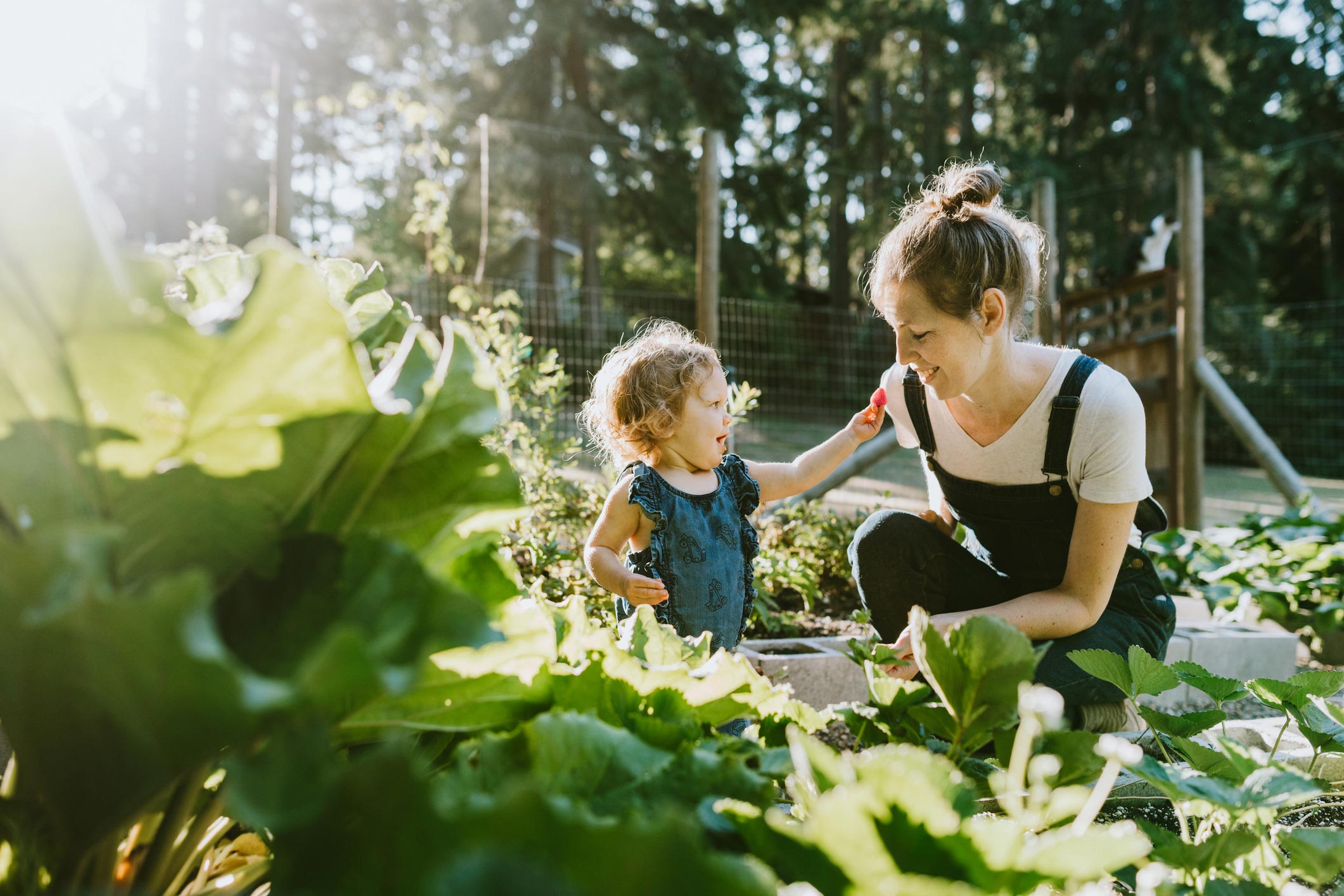First, N95 masks were in short supply. Then, hand sanitizer. Then, toilet paper. Now, we’re starting to see food shortages as COVID-19 disrupts our food supply chains. Many prominent experts have been pointing out the fragility of our food system, and its dependency on long supply chains, for years. But as long as the supermarket shelves were full, those warnings went unheeded.
Now that the COVID-19 pandemic has caused labor shortages that impact how food gets distributed and sold worldwide, we’re starting to realize the importance of strong local systems for producing and distributing food. And for many of us, that translates into a newfound desire to start a food garden.
It makes sense. As many of us spend more time at home, some of us staring at lawns whose only nutritional value is in the odd dandelion, and some of us just wanting to be more self-reliant, more and more people are feeling the urge to grow something edible. And it’s true that growing food can make us more self-sufficient and give us a feeling of control in a world in which so much is out of our control.
But growing food also gives us this triple whammy:
- People who grow more vegetables tend to eat more vegetables;
- People who eat more vegetables tend to be healthier; and
- Healthy people are far less likely to get seriously sick with COVID-19.
The truth is, growing nutrient-rich fruits and vegetables is one of the best health insurance policies you can take out.
Turning Lawns into Food Gardens
As a society, it’s not like we don’t have the land. Lawns are the single largest irrigated crop in the US, covering nearly 32 million acres. On the other hand, fruits and vegetables grow on only about 10 million acres in the United States. This means the space that American lawns occupy could provide enough land to literally quadruple the amount of fruits and vegetables grown in the country!
Home gardening is a rapidly growing movement. Heirloom seed companies like Johnny’s Selected Seeds and Southern Exposure Seed Exchange are already overwhelmed with orders and have resorted to rationing on their websites. Nurseries and garden centers nationwide report booming sales of vegetable and herb seeds and plants. And Google Keyword Trends shows the newfound popularity for searches such as “growing food,” “food garden,” “vegetable gardens,” and “victory gardens.”
Wait, “victory garden”? What the heck is that?
The Origins of the “Victory Garden” Movement
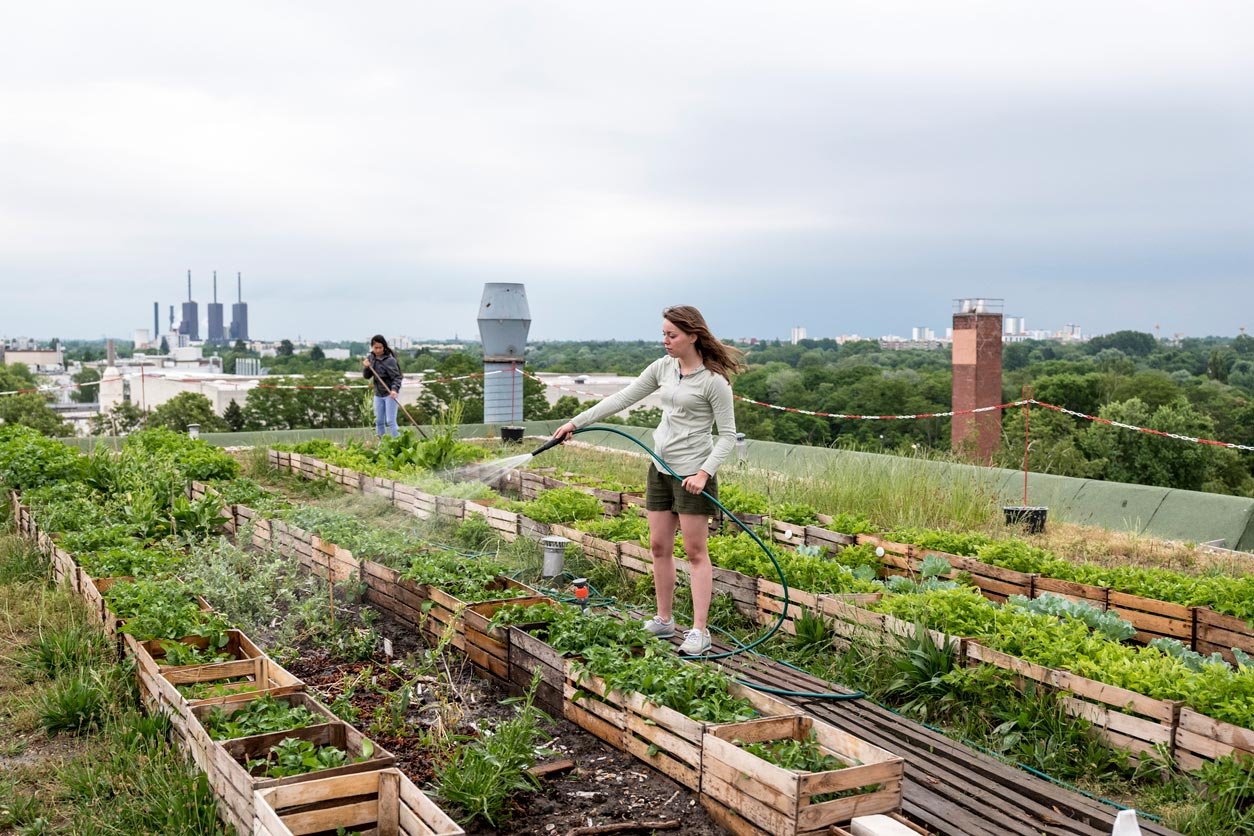
The first Victory Garden movement began during World War I. With millions of Americans fighting overseas, the US government diverted commercial crops to the European theater and redirected transportation towards moving troops and munitions instead of food. Ordinary citizens stepped into the breach and started a food garden wherever they could: rooftops, fire escapes, empty lots, schools, and backyards. The efforts of ordinary “stay-at-home” Americans saved entire European populations from starvation and disease.
These “war gardens” or “victory gardens” persisted following the war’s end during the social distancing that accompanied the global 1918 Spanish Flu pandemic. Americans, Canadians, British, and Australians kept their gardens growing right through the Great Depression and World War II. At one point, 20 million backyard, school, and community victory gardens provided more than 40% of the vegetables eaten in the United States.
The World War II revival of victory gardens, while expressing solidarity, sacrifice, and patriotism, was tinged with an overlay of racism as Americans gardened to replace the lost labor of the many Japanese farm workers who were forced into internment camps. But let’s remember that at its roots, and for decades of hardship, the concept of a victory garden was birthed to help feed a nation and then help it survive a pandemic.
The Current Threats to Our Food Supply
Many people are experiencing disruptions in our food supply chain now, seeing empty grocery store shelves, waiting in long lines to buy staples, and hearing daily stories of food hoarding. Those of us used to next-day Amazon delivery are now waiting weeks or even months for food deliveries — if they ever come. Food banks and pantries for the poor are experiencing long lines, and in some cases, have had to resort to rationing. So what’s causing these problems?
For one thing, a large segment of the food industry caters to institutions that have largely shut down for the time being: restaurants, schools, hotels and conference centers, stadiums, theme parks, airports, and cruise ships. Manufacturers can’t just repackage industrial-sized bags of rice and flour into consumer sizes overnight. And tragic amounts of fresh produce are rotting in fields and orchards because the system isn’t set up to transport fruits and vegetables to hungry consumers. Meat and dairy are particularly affected, partly because it’s harder to transport animal-based foods safely and partly because the slaughterhouses, dairies, and processing plants are, themselves, hotbeds of COVID-19. (Editorial aside: Now could be a great time to go plant-based, if you haven’t already made the leap.)
Border closures, grounded airlines, closed ports, and restrictions on movement have also made it harder to continue food production and transport goods internationally. And since much of the food sold in the US today originates from overseas, supply chain breakdowns create the potential for shortages of critical ingredients or components.
Political issues are exacerbating the crisis, too. As more front-line workers in the fast food and grocery industries are hospitalized with or die of the virus, others are going on strike and engaging in protests against the apparent disregard for human life shown by the policies of Walmart, Amazon, and other large retailers that remain in operation.
Given all these present threats, which have arisen on top of a food system that was already fragile due to unsustainable farming practices and rampant inequities (food service and agricultural workers weren’t exactly being treated like royalty, to begin with), it’s no wonder home gardening is making more and more sense.
10 Reasons to Start a Food Garden Today
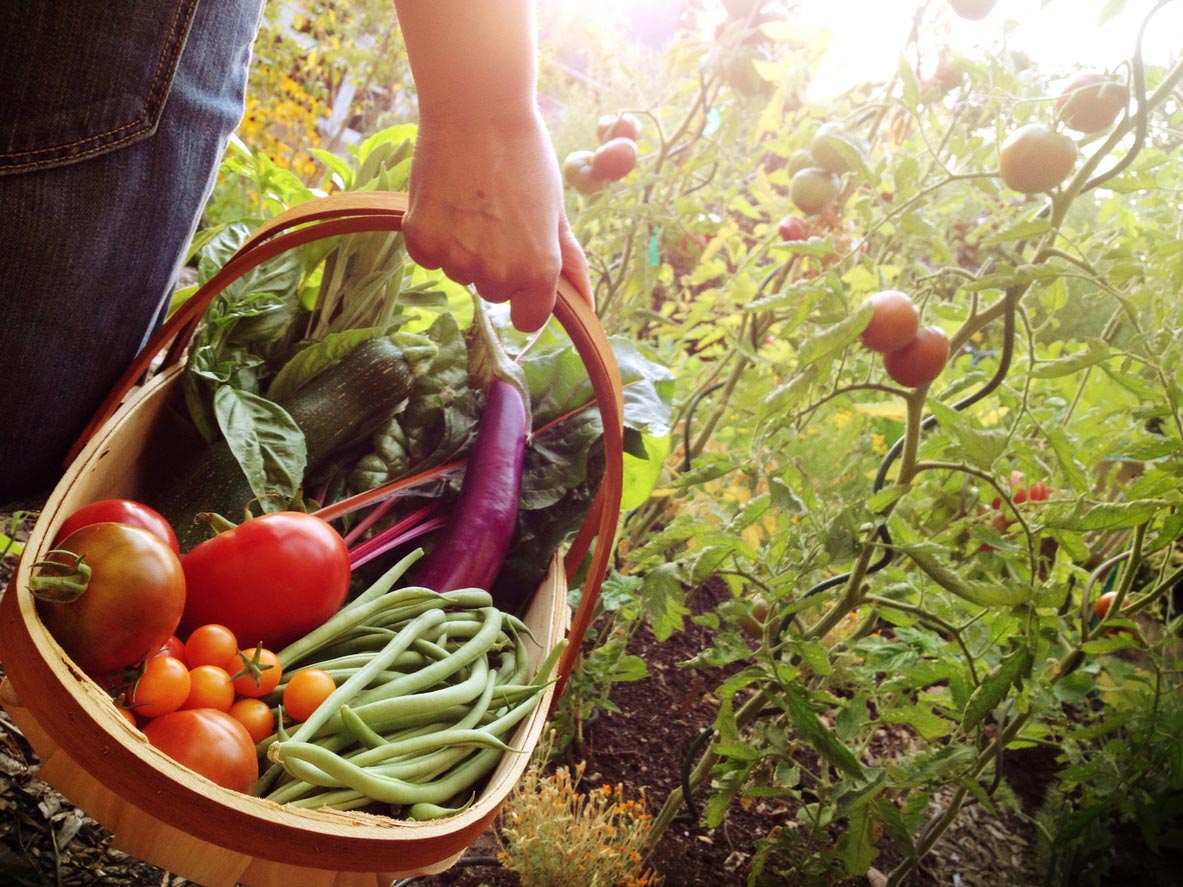
Even if you aren’t struggling to get enough food to feed your family, there are still a bunch of good reasons to start a food garden.
1. Self-reliance
The industrial agriculture system that provides most of our food is inherently unstable. In a few generations, we’ve depleted some of the richest topsoil deposits in the world. And we’ve resorted to using synthetic fertilizers and increasingly toxic pesticides and herbicides to maintain productivity. There’s no way this industrialized and chemical-dependent method of farming can continue to feed us long-term. By starting to grow your own food, you begin to assert control over your family’s food supply.
2. Sense of Purpose
I’ve seen a lot of “humorous” memes to the effect that the most patriotic thing we can do these days is stay home and binge-watch Netflix. While it’s true that social distancing saves lives, there are many things we can do that can make the world a better place. For one, we can plant and tend a garden to feed ourselves. If you’re not in the long line outside the supermarket, then the line is that much shorter for everyone else. Today’s food garden takes some of the pressure off an already teetering food system. And if that’s not patriotic, I don’t know what is.
3. Learn a New Skill
Gardening is a skill set — one that’s fun to learn and invaluable once you’ve gotten the hang of it. And I would argue that the ability to grow your own food is as fundamental to survival and well-being as reading, writing, and computer literacy.
4. Cleaner, Safer Food
Unless you’re buying only locally-grown, organic fruits and veggies, the produce that you get from the supermarket is often laden with pesticides, herbicides, and protective wax coverings. When you grow your own, you’re in charge of quality control. Growing a small food garden allows you to pick pests off by hand or use non-toxic pest management options. Therefore, you don’t need to rely on toxic sprays and powders to keep critters off your cauliflower. And since most “fresh” produce that you can find in the supermarket was harvested a week or two before you can buy it, the food that you grow yourself will be much fresher, with a higher nutrient profile.
5. Get More Fruits and Veggies in Your Diet
I’ve never seen a seed catalog selling Pop-Tart bushes and Snickers trees. Your food garden will naturally contain the healthiest foods on the planet: fruits, veggies, legumes, and roots. And what you grow, you’ll eat. Even picky eaters won’t be able to resist a ripe heirloom tomato or just-picked kale and cucumber salad that they harvested themselves.
About that delicious, funny-looking heirloom tomato: You will have a hard time finding that variety in your big supermarket. Most produce varieties aren’t bred for taste or nutrition. Instead, they were developed to withstand transcontinental shipping in 18-wheel freightliners. When you start a food garden, you have the opportunity to buy varieties that taste much better and are far more nutritious than the standard ones you’re used to. The only downside is that you have to eat them within a day or two of picking, which is not really a downside at all!
Global Public Service Announcement: If you’re doing OK financially, and looking for a worthwhile project to support, check out veganic gardener Will Bonsall’s Scatterseed Project. Will has been saving rare and heirloom seeds for over 40 years. And his collection contains the only known examples of certain varieties that may thrive under the pressure of climate change. As Will says, “Genetic diversity is the hedge between us and global famine.” The documentary Seed: The Untold Story features his work. Watch this segment of the film, and consider supporting Scatterseed to ensure that these infinitely valuable seeds survive.
6. Reduce Your Risk of Chronic Disease
The science is abundantly clear that the more whole plant foods you consume, the lower your risk of developing cardiovascular disease, high blood pressure, obesity, and type 2 diabetes. This is a compelling reason to add more fruits and veggies to your diet at any time. But it’s even more urgent an argument during the coronavirus pandemic. Studies out of New York are showing the link between chronic disease and COVID-19 mortality. Eighty-nine percent of those who died from the virus had pre-existing chronic conditions. And obese people were twice as likely to die as those of normal weight. This is the perfect time to clean up your diet, reducing your intake of processed and animal-based foods, and upping your consumption of life-giving plants.
7. Reduce Your Grocery Bill
Like any new hobby, you can start gardening frugally, or you can buy every labor-saving device on the market. If you begin with just a few packets of seeds and a couple of bags of potting soil, you’ll recoup your investment through a reduced grocery bill within a few months. If you’re converting a lawn into a garden, you may not even need new soil. And if you haven’t been spraying herbicides on your grass, you may have nutrient-rich soil ready for your first round of crops without adding any amendments. An added bonus is if you can compost your kitchen scraps, saving money on fertilizer by creating a nutrient cycle from garden to kitchen, back to garden.
8. Avoid Virus-Contaminated Food
Many of us pick up a piece of fruit at the supermarket, feel it for freshness, and then put it back down if we aren’t satisfied. If you assume that we haven’t broken that habit completely, then it’s likely that some of the produce on our supermarket shelves could already be contaminated with SARS-CoV-2, and possibly other pathogens as well. Sure, you can take it home and wash it well, but think of all the surfaces it can touch, as well as where your hands will go before you can disinfect everything. The produce you grow in your garden will contain only the pathogens that you bring to them.
9. Get Outside
If you have a piece of land — even a small yard — then gardening gives you a reason to spend time outside. Even as we try to stay safe through social distancing, we also need sunshine, exercise, and fresh air to be well, physically and mentally. There are also significant health benefits to being in contact with soil. Getting dirty supports our immune system, and many of the compounds in soil can improve our mood and cognitive functioning. Some researchers have gone so far as to call the soil microbiome a “human antidepressant.”
10. Grow It Forward
In addition to growing a bounty of beautiful vegetables for yourself, consider sowing a few extra seeds to support your local food shelf. Plant a Row for the Hungry (PAR) is sponsored by GardenComm to help connect local growers with agencies that serve the food insecure. No PAR committee in your community? No problem. Grow those plants, and then reach out to your local food pantry or soup kitchen to make plans to share from your harvest. If you grow an overabundance of anything, there’s no need for it to go to waste (or turn into compost) when it could feed hungry people instead.
How to Start Your Food Garden
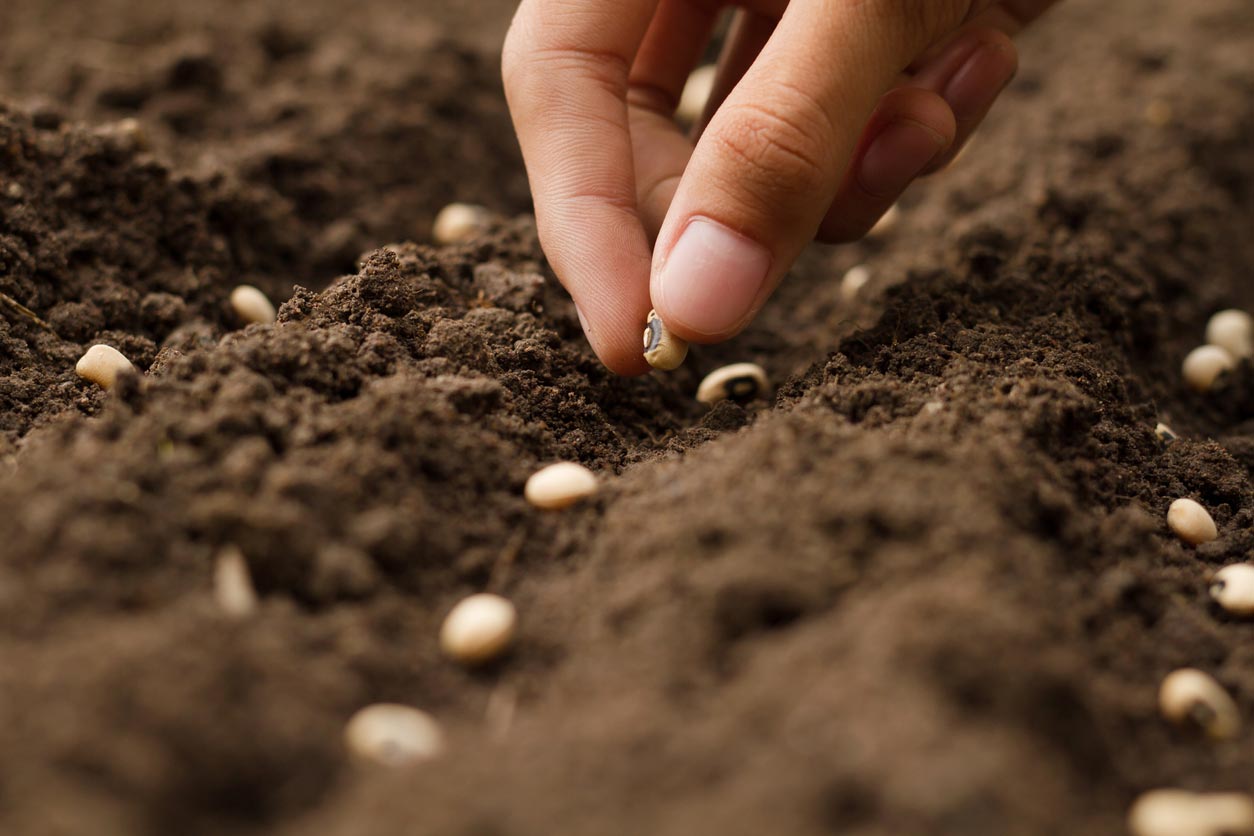
If you’ve never gardened before, the most important thing is to avoid overwhelm. There are many guides out there to help you get started with minimal investment, effort, and confusion.
1. Use a Planting Calendar
First, check a planting calendar for information on what grows where you live. The United States Department of Agriculture has a Hardiness Zone Map that will tell you what “zone” you live in. The zones differ by first and last frost date, average high and low temperatures, and hours of sunlight, among other criteria. Once you know your zone, you can check seed packets for information about when to plant and harvest in that zone. You can also Google “[Your state or city] planting guide” or planting schedule. You’ll find excellent information from seed companies, local agriculture extension offices, and universities that will tell you what grows well in your region and how to plant, nourish, and harvest those crops.
2. Do Your Research
Next, read up on edible gardening for rural, suburban, or urban environments (depending on where you are). Some good books include The Urban Micro-Farm, Edible Landscaping with a Permaculture Twist, and Edible Landscaping.
Once you’ve done a bit of research, talk with your family members about what foods they’d like to grow and eat. You’ll get a lot more help and enthusiasm when you gear the garden to their goals and desires. Once you’ve got a plan, it’s time to decide how you’re going to garden prior to ordering seeds or seedlings, gardening supplies, and potting soil.
3. Prepare Your Garden
The most straightforward method is to remove grass with a hoe, rototiller, or (for much bigger areas) a small tractor. And then, work the underlying soil for tilth and nutrients, and start planting directly into the ground. You might also want to conduct a couple of simple soil tests for pH and nutrient content. Gardening stores sell test kits for a few dollars. And local agriculture extensions and county agencies often allow local farmers and gardeners to bring in soil samples for free testing (Although check with them first since social distancing may have shut down this service in your area). Once you’ve tested, you can determine what (if anything) you might need to add to your soil and what plants are most likely to thrive in your conditions
Container Gardening
If you don’t have a yard suitable for cultivation, the easiest way to get started is with containers. You can use pretty much anything: large flower pots, milk crates lined with burlap, wicker baskets, and non-toxic grow bags can all serve. You’ll need drainage, so you’ll have to poke or drill holes in the buckets and plastic containers.
Containers are actually ideal in that you have total control over the soil. And you can position them for maximum sun and protection from wind. If they’re small enough, you can even move them around. Plants that thrive in containers include tomatoes, herbs, salad greens, beans, broccoli, peppers, cucumbers, and dark leafy greens.
If you have no outdoor space, you can garden indoors with containers. All you need is a decent light source. Garden centers will sell you specialized grow lights, often on timers, but they can be pricey. You might do almost as well with LED or fluorescent shop lights from a home improvement store. Wire shelving makes a great place to grow plants with the shop light attached to the shelf above. And if you have good outdoor lighting from windows, then you can let your plants photosynthesize the natural way — from the sun.
Straw Bale Gardening
If you have more space, but no good soil, consider straw bale gardening. You can turn a bale of straw (not hay, which contains seeds that will compete with your plantings) into a growth medium by watering the bale for 10 days or so, topping with potting soil and planting seeds right in the soil. As the straw breaks down, its nutrients become available for the growing plants.
The Sheet-Mulch Method
If you have a lawn that you’d like to convert quickly to vegetable production, consider the sheet-mulch method. This consists of putting down cardboard or some other organic material to block the growth of grass. And then, adding layers of mulch, compost, and topsoil on top of the former lawn. This works much better with established seedlings than sowing seeds directly into the mulch, so you’ll have to buy seedlings or start them indoors in trays.
Raised Bed Gardening
Another option is to create raised beds and fill them with high-quality growth medium. You can build the beds out of wood, or order raised bed kits online and put them together yourself. These tend to be more expensive since you’ll need to purchase enough soil and amendment to fill them to a depth of at least one to two feet, but you’ll be able to plant in them right away. Also, if your lawn contains pesticides, herbicides, and toxic building materials, raised beds can give your veggies a “fresh start” with clean, imported soil.
Greenhouses
If you’re fortunate enough to have space for a greenhouse, you can garden pretty much year-round. You can add weeks to the start of the growing season by starting seedlings in the greenhouse well before you can plant them outdoors. And you can grow fall crops like lettuce and kale in the greenhouse even in cold, snowy winters.
Whatever route you take, try to reach out to local gardeners, who will be able to balance your book knowledge with practical experience growing in your area. And don’t forget the University of YouTube as a great “how-to” resource for developing your green thumbs!
Obstacles to Starting a Food Garden
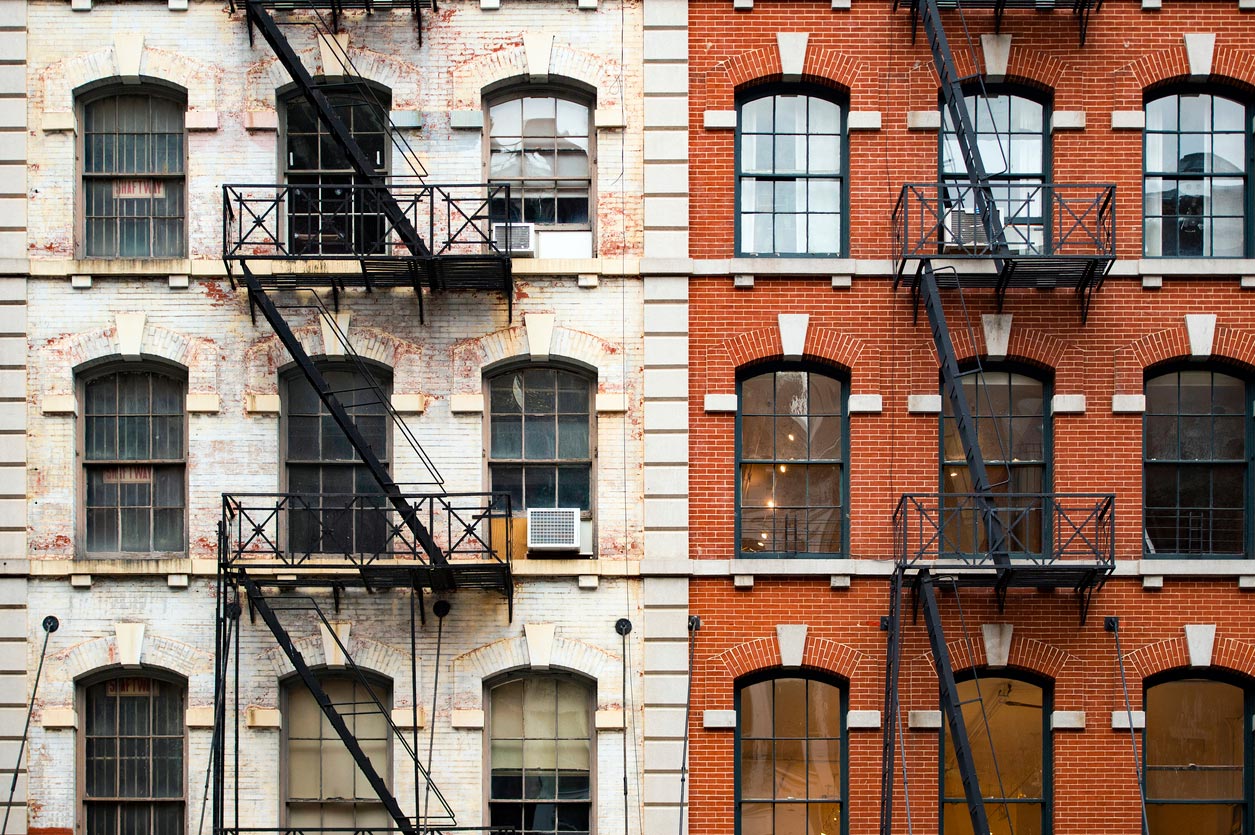
I don’t want to make it seem like starting a food garden is the easiest thing in the world. You’ll make mistakes. Sometimes plants just don’t grow; for reasons we never figure out. And there’s so much conflicting information out there, it’s easy to get confused. But as with any worthwhile endeavor, you’ll put up with the problems and develop your ability to produce a satisfying yield. However, there are other obstacles you should know about that come from entrenched interests that oppose home gardening.
Local Zoning Laws
Many cities have laws in place that actually prohibit edible gardens in front yards. Lawmakers defend these laws as being necessary for public health and safety, and for aesthetic reasons. But for many people trying to grow food and reduce the environmental burden of fertilizer- and water-hungry lawns, they are infuriating. Hopefully, the current crisis will provide a burst of energy to repeal these laws and encourage edible landscaping in the future.
Reliance on Industrial Agriculture
Growing our own food, as natural as that is when you think about it, still suffers from the “weirdness factor.” That’s because we have relied so heavily, for so long, on industrial agriculture for our calories and nutrients. It’s hard to imagine replacing even some of it with something else. When you spreadsheet the costs and returns of home gardening, you may discover, depending on what you’re starting with, that you can’t grow food as cheaply as you can buy it from the supermarket. But that’s not because industrial agriculture is more efficient. Instead, it’s because of two unfortunate things: giant subsidies of commodity crops by the US government, and passing the environmental and health costs of industrial agriculture on to society at large rather than factoring them into the price of food.
Lack of Government Funding
Also, there’s no coordinated government support for people to grow their own gardens. No funding, no centralized databases, and no promotion to normalize this most healthy, vital, and patriotic of activities.
Until society comes around, though, we can support each other, our countries, and the most vulnerable among us by flexing our gardening muscles and growing some of our own nutrient-dense, clean, plant foods. The more of us take this step, the more acceptable, normal, and necessary it will become.
Garden-Friendly Recipes
Once you’re ready to enjoy the fruits of your labors, let their flavors shine in these three simple and tasty recipes!
Za’atar Spiced Rainbow Carrots

This simple yet delicious recipe will help to minimize trips to the grocery store while utilizing fresh and nutrient-dense carrots from your garden. Beta-carotene-rich carrots are roasted oil-free and tossed with Middle Eastern Za’atar spices in this flavorful international recipe.
Rad Raw Rainbow Pad Thai by Angela Lidden at Oh She Glows

Use any vegetables growing in your garden for this recipe! Zucchini, carrots, peppers, tomatoes — anything goes in this dish. By eating a rainbow of local foods sourced directly from your very own yard, you’re surely getting a healthy dose of healing nutrition. The dressing uses some sweetener and oil, which can be left out or replaced.
The Ultimate Gazpacho by Cookie and Kate

Sip on this cool and refreshing gazpacho while you’re relaxing on a sweet summer evening, knowing you’re giving your body a dose of sublime nourishment. This is another opportunity to enjoy a variety of fresh vegetables from your garden!
In Conclusion
Starting a food garden is an important way to increase food security, health, and ease food supply anxiety during the coronavirus pandemic. Actually, they are all those things at any time. Perhaps we can use this crisis as an opportunity to learn how to garden, to establish home gardens that can produce food for ourselves and our communities, and to change the culture to create a robust, locally-based, health-promoting, and sustainable agricultural system for our future.
Tell us in the comments:
- Have you gardened before? What did you grow?
- What’s the first thing you can do to start growing some of your own food?
- What are you looking forward to eating from your own food garden?
Featured image: iStock.com/RyanJLane
